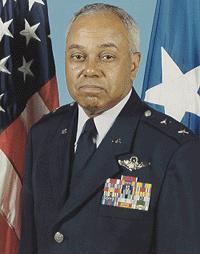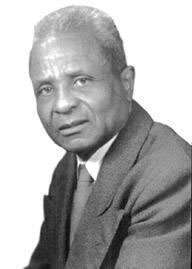
A sit-in or sit-down is a form of direct action that involves one or more people occupying an area for a protest, often to promote political, social, or economic change. The protestors gather conspicuously in a space or building, refusing to move unless their demands are met. The often clearly visible demonstrations are intended to spread awareness among the public, or disrupt the goings-on of the protested organisation. Lunch counter sit-ins were a nonviolent form of protest used to oppose segregation during the civil rights movement, and often provoked heckling and violence from those opposed to their message.

The Greensboro sit-ins were a series of nonviolent protests in February to July 1960, primarily in the Woolworth store—now the International Civil Rights Center and Museum—in Greensboro, North Carolina, which led to the F. W. Woolworth Company department store chain removing its policy of racial segregation in the Southern United States. While not the first sit-in of the civil rights movement, the Greensboro sit-ins were an instrumental action, and also the best-known sit-ins of the civil rights movement. They are considered a catalyst to the subsequent sit-in movement, in which 70,000 people participated. This sit-in was a contributing factor in the formation of the Student Nonviolent Coordinating Committee (SNCC).
The Friendship Nine, or Rock Hill Nine, was a group of African-American men who went to jail after staging a sit-in at a segregated McCrory's lunch counter in Rock Hill, South Carolina in 1961. The group gained nationwide attention because they followed the 1960 Nashville sit-ins strategy of "Jail, No Bail", which lessened the huge financial burden civil rights groups were facing as the sit-in movement spread across the South. They became known as the Friendship Nine because eight of the nine men were students at Rock Hill's Friendship Junior College.
Cleveland “Cleve” Sellers Jr. is an American educator and civil rights activist.

The International Civil Rights Center & Museum (ICRCM) is located in Greensboro, North Carolina, United States. Its building formerly housed the Woolworth's, the site of a non-violent protest in the civil rights movement. Four students from North Carolina Agricultural and Technical State University started the Greensboro sit-ins at a "whites only" lunch counter on February 1, 1960. The four students were Franklin McCain, Joseph McNeil, Ezell Blair Jr., and David Richmond. The next day there were twenty students. The aim of the museum's founders is to ensure that history remembers the actions of the A&T Four, those who joined them in the daily Woolworth's sit-ins, and others around the country who took part in sit-ins and in the civil rights movement. The Museum is currently supported by earned admissions and Museum Store revenues. The project also receives donations from private donors as a means of continuing its operations. The museum was founded in 1993 and officially opened its doors fifty years to the day after the sit-in movements in Greensboro NC.
Jibreel Khazan is a civil rights activist who is best known as a member of the Greensboro Four, a group of African American college students who, on February 1, 1960, sat down at a segregated Woolworth's lunch counter in downtown Greensboro, North Carolina challenging the store's policy of denying service to non-white customers. The protests and the subsequent events were major milestones in the Civil Rights Movement.

Clarence Lee "Curly" Harris was the store manager at the F. W. Woolworth Company store in Greensboro, North Carolina, during the Greensboro sit-ins in 1960.

Joseph Alfred McNeil is a retired major general in the United States Air Force who is best known for being a member of the Greensboro Four; a group of African American college students who, on February 1, 1960, sat down at a segregated Woolworth's lunch counter in downtown Greensboro, North Carolina challenging the store's policy of denying service to non-white customers.
The Atlanta Student Movement was formed in February 1960 in Atlanta by students of the campuses Atlanta University Center (AUC). It was led by the Committee on the Appeal for Human Rights (COAHR) and was part of the Civil Rights Movement.
The Royal Ice Cream sit-in was a nonviolent protest in Durham, North Carolina, that led to a court case on the legality of segregated facilities. The demonstration took place on June 23, 1957 when a group of African American protesters, led by Reverend Douglas E. Moore, entered the Royal Ice Cream Parlor and sat in the section reserved for white patrons. When asked to move, the protesters refused and were arrested for trespassing. The case was appealed unsuccessfully to the County and State Superior Courts.

Franklin Eugene McCain was an American civil rights activist and member of the Greensboro Four. McCain, along with fellow North Carolina A&T State University students Ezell Blair Jr., Joseph McNeil and David Richmond, staged a sit-in protest at the Woolworth lunch counter in Greensboro, North Carolina, on February 1, 1960 after they were refused service due to the color of their skin. Their actions were credited with launching the Greensboro sit-ins, a massive protest across state lines involving mostly students who took a stand against discrimination in restaurants and stores by refusing to leave when service was denied to them. The sit-ins successfully brought about the reversal of Woolworth's policy of racial segregation in their southern stores, and increased national sentiment to the fight of African-Americans in the south.

Warmoth Thomas Gibbs Sr. was an American educator, retired Second Lieutenant in the United States Army, civil rights activist, and fourth president of North Carolina Agricultural and Technical State University. Gibbs was one of the first black commissioned officers in World War I and served as president of then North Carolina Agricultural and Technical College from 1955 to 1960. During his presidency, North Carolina A&T became accredited by the Southern Association of Schools and Colleges.
February One is the name of the 2002 monument dedicated to Ezell Blair Jr., Franklin McCain, Joseph McNeil and David Richmond who were collectively known as the Greensboro Four. The 15-foot bronze and marble monument is located on the western edge of the campus of North Carolina Agricultural and Technical State University in Greensboro, North Carolina. James Barnhill, the sculptor who created the monument, was inspired by the historic 1960 image of the four college aged men leaving the downtown Greensboro Woolworth store after holding a sit-in protest of the company's policy of segregating its lunch counters. The sit-in protests were a significant event in the Civil Rights Movement due to increasing national sentiment of the fight for the civil rights of African-Americans during this period in American history.

David Leinail Richmond was a civil rights activist for most of his life, but he was best known for being one of the Greensboro Four. Richmond was a student at North Carolina A&T during the time of the Greensboro protests, but never ended up graduating from A&T. He felt pressure from the residual celebrity of being one of the Greensboro Four; his life was threatened in Greensboro and he was forced to move to Franklin, NC. Eventually, he moved back to Greensboro to take care of his father. Richmond was awarded the Levi Coffin Award for leadership in human rights by the Greensboro Chamber of Commerce in 1980. Richmond seemed to be haunted by the fact that he could not do more to improve his world, and battled alcoholism and depression. He died in 1990 and was awarded a posthumous honorary doctorate degree from North Carolina A&T
The history of the 1954 to 1968 American civil rights movement has been depicted and documented in film, song, theater, television, and the visual arts. These presentations add to and maintain cultural awareness and understanding of the goals, tactics, and accomplishments of the people who organized and participated in this nonviolent movement.
Negroes with Guns: Rob Williams and Black Power is a 2004 feature film by directors Sandra Dickson and Churchill Roberts. It was a National PBS Broadcast, on Independent Lens, in February 2006. The film won the 2006 Erik Barnouw Award for Outstanding Historical Documentary, of the Organization of American Historians, the Audience Award of the Detroit Docs Film Festival, in 2005, and the Critic's Award for Outstanding Feature Documentary of the New York UrbanWorld Film Festival, in 2005.

The sit-in movement, sit-in campaign or student sit-in movement, were a wave of sit-ins that followed the Greensboro sit-ins on February 1, 1960 in North Carolina. The sit-in movement employed the tactic of nonviolent direct action and was a pivotal event during the Civil Rights Movement.
Seizing Justice: The Greensboro 4 is a 2010 television documentary film by Lynn Kessler for the Smithsonian Channel. It tells the story of The Greensboro Four through photographs, archival footage and interviews from Joseph McNeil, David Richmond, Franklin McCain and Jibreel Khazan, three of the four men who began the sit-in at Woolworth's in 1960 to protest segregation practices. The film also includes interviews from historians from the Smithsonian Museum of American History and civil right leader and congressman John Lewis.
The Atlanta sit-ins were a series of sit-ins that took place in Atlanta, Georgia, United States. Occurring during the sit-in movement of the larger civil rights movement, the sit-ins were organized by the Committee on Appeal for Human Rights, which consisted of students from the Atlanta University Center. The sit-ins were inspired by the Greensboro sit-ins, which had started a month earlier in Greensboro, North Carolina with the goal of desegregating the lunch counters in the city. The Atlanta protests lasted for almost a year before an agreement was made to desegregate the lunch counters in the city.







